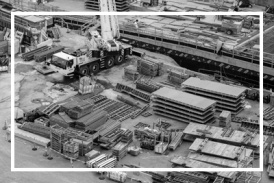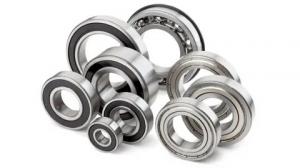Plain Bearing Market to Reach USD 23.9 Billion by 2035, Driven by Automotive Innovation and Industrial Expansion
Plain Bearing Market grows steadily, driven by demand in automotive, aerospace, and industrial machinery for low-maintenance, durable components.
Advancements in materials science and engineering are further propelling the market. Modern plain bearings are being manufactured with advanced composite materials, including PTFE-lined and fiber-reinforced polymers, offering improved wear resistance, self-lubrication, and corrosion protection. This makes them ideal for environments with high moisture, temperature fluctuations, and exposure to chemicals. As automation and robotics become central to industrial operations, the requirement for low-maintenance and highly durable bearing solutions is accelerating. Additionally, stringent energy efficiency regulations in automotive and manufacturing industries are pushing OEMs to adopt bearing systems that reduce friction and energy consumption, further fueling market growth.
Get Ahead with Our Report: Request Your Sample Now!
https://www.futuremarketinsights.com/reports/sample/rep-gb-14289
Key Takeaways for the Plain Bearing Market
The projected growth to nearly USD 24 billion by 2035 underlines the increasing significance of plain bearings in modern mechanical systems. Their rising usage in electric vehicles, where space-saving and silent operation are crucial, is a major factor contributing to demand. The industrial machinery sector is also a key revenue generator, with applications ranging from pumps and compressors to textile machinery and construction equipment. Furthermore, the shift toward renewable energy projects such as wind and hydroelectric power plants is boosting the deployment of heavy-duty plain bearings designed for harsh and continuous operations. The growing preference for low-friction, high-durability solutions across sectors is expected to sustain long-term market growth.
Emerging Trends in the Global Market
The global plain bearing market is witnessing several emerging trends that are reshaping product development and supply chain strategies. One significant trend is the increasing focus on sustainability and environmental compliance. Manufacturers are investing in the development of lead-free, recyclable, and eco-friendly plain bearings to meet evolving regulatory standards and customer expectations. Another key trend is the miniaturization of plain bearings for compact mechanical assemblies in electronics and precision instruments. This has opened up new application areas in medical devices, drones, and portable industrial equipment.
In addition, digitalization is making a notable impact on the sector. Companies are integrating IoT sensors within plain bearing assemblies to enable predictive maintenance and real-time monitoring of bearing performance. This smart bearing technology is particularly useful in industries such as mining, oil & gas, and railways, where equipment failure can lead to significant downtime and financial losses. Manufacturers are also customizing bearing designs based on specific load, speed, and environmental requirements to meet customer-specific needs, which is strengthening supplier-buyer relationships and encouraging repeat business.
Significant Developments in the Global Sector: Trends and Opportunities in the Market
Recent years have witnessed significant developments in the plain bearing market that point to expanded opportunities and evolving customer demands. The automotive industry continues to be a major innovation hub, with manufacturers increasingly using polymer and metal-polymer plain bearings in steering systems, suspension components, and electric drivetrains. These bearings are helping to reduce vehicle weight and improve overall fuel efficiency, supporting automakers in meeting stringent emissions targets. The aerospace sector, too, is deploying high-performance plain bearings in aircraft engines, landing gear, and control systems due to their ability to function under high loads and temperatures without frequent lubrication.
Opportunities are also emerging in developing economies, where industrialization is accelerating. Countries in Asia-Pacific, Latin America, and the Middle East are investing in infrastructure and manufacturing capabilities, creating substantial demand for machinery components including plain bearings. Furthermore, as governments push for modernization of public transportation and defense systems, the need for high-reliability bearing solutions is surging. Custom engineering services and integrated bearing systems are opening new revenue streams for manufacturers who can deliver performance-driven and application-specific solutions.
Recent Developments in the Market
The plain bearing market has seen several recent innovations and strategic moves aimed at enhancing competitiveness. Leading companies have launched new product lines made from thermoplastic composites, which offer the advantages of both lightweight and high-load capacity. Some manufacturers have also introduced self-lubricating spherical plain bearings that eliminate the need for external lubrication even under extreme operational conditions. Strategic mergers and acquisitions are on the rise, with players expanding their geographical reach and technological capabilities through partnerships and consolidations.
Digital platforms and e-commerce channels are playing an increasingly important role in market penetration, especially among SMEs and independent maintenance providers. Companies are leveraging online configurators, virtual demos, and AI-driven recommendation tools to improve customer engagement and product selection. These efforts are being supplemented by investment in advanced manufacturing technologies such as additive manufacturing and CNC machining, which enable rapid prototyping and customization at lower costs.
Detailed Market Study: Full Report and Analysis
https://www.futuremarketinsights.com/reports/plain-bearing-market
Competition Outlook
The plain bearing market is moderately consolidated, with several global and regional players competing on innovation, pricing, and customer service. Major players in the market include GGB Bearing Technology, SKF Group, Schaeffler Group, RBC Bearings Inc., NSK Ltd., Timken Company, NTN Corporation, Igus GmbH, THK Co., Ltd., and Boston Gear. These companies are actively investing in R&D, expanding product portfolios, and exploring new verticals such as renewable energy and autonomous vehicles to maintain a competitive edge.
Key Segmentations
In terms of segmentation, the market is categorized by type (journal, thrust, linear, spherical, and others), material (metal, plastic, composite), end-use industry (automotive, aerospace, industrial, marine, energy, construction, and others), and distribution channel (OEM and aftermarket). Among these, journal bearings continue to hold a dominant share due to their extensive application in engines and rotating machinery. Regionally, Asia-Pacific leads the market, fueled by rapid industrialization and automotive production in countries like China and India, followed by North America and Europe, which are investing in next-generation manufacturing and transport technologies.
Automotive Auxiliaries Industry Analysis Reports
Railway Sliding Bearing Market Outlook From 2025 to 2035
https://www.futuremarketinsights.com/reports/railway-sliding-bearing-market
Automotive Connecting Rod Bearing Market Outlook 2025 to 2035
https://www.futuremarketinsights.com/reports/automotive-connecting-rod-bearing-market
Railway Bearing Market Outlook 2025 to 2035
https://www.futuremarketinsights.com/reports/railway-bearing-market
ASEAN Automotive Bearings Market Outlook
https://www.futuremarketinsights.com/reports/asean-automotive-bearings-market
Automotive Bearing Market Overview
https://www.futuremarketinsights.com/reports/automotive-bearings-market
Ankush Nikam
Future Market Insights, Inc.
+ +91 90966 84197
email us here
Visit us on social media:
LinkedIn
Facebook
YouTube
X
Legal Disclaimer:
EIN Presswire provides this news content "as is" without warranty of any kind. We do not accept any responsibility or liability for the accuracy, content, images, videos, licenses, completeness, legality, or reliability of the information contained in this article. If you have any complaints or copyright issues related to this article, kindly contact the author above.
Patrick and Josh Lange of Business Modification Group Sell Established HVAC Company in Broward County
Southeast Addiction Center Atlanta Highlights the Urgent Need for Comprehensive Alcohol Addiction Treatment
The World’s First Literacy-Themed Gas Stations Launch a Summer Reading Adventure for Kids
Kalendarium
Więcej ważnych informacji
 Jedynka Newserii
Jedynka Newserii

 Jedynka Newserii
Jedynka Newserii

Transport

Import materiałów budowlanych z Rosji zagrożeniem dla konkurencyjności europejskiego rynku. Konieczne są zmiany i egzekwowanie sankcji
Unia Europejska powinna zrewidować politykę celną na import materiałów budowlanych spoza państw członkowskich, w tym państw wschodnich – twierdzą uczestnicy konferencji „Bezpieczeństwo gospodarcze UE”. Obecnie Wspólnota nakłada na europejskich producentów coraz więcej ograniczeń, nie rewidując polityki celnej, co przekłada się na systematyczne osłabienie konkurencyjności przedsiębiorstw, spadek produkcji i zagrożenie dla miejsc pracy.
Konsument
Polacy odczuwają brak wiedzy na temat inwestowania. Może to sprzyjać podejmowaniu nieracjonalnych decyzji finansowych

Co trzeci Polak odczuwa brak wiedzy w obszarze inwestowania, a tylko co piąty chciałby pogłębić swoją wiedzę na ten temat – wynika z badania „Poziom wiedzy finansowej Polaków 2025”. Ci, którzy na własną rękę szukają informacji i porad, coraz częściej sięgają do blogów, portali, podcastów i wideo w internecie. Eksperci przestrzegają, że finansowych i inwestycyjnych porad udzielają nie tylko specjaliści w danej dziedzinie, więc potrzebna jest zasada ograniczonego zaufania.
Handel
Do 2030 roku liczba plastikowych opakowań w e-handlu modowym może się podwoić. Ich udział najszybciej rośnie w Polsce

Wraz ze wzrostem kanału e-commerce w branży modowej rośnie liczba wykorzystywanych opakowań, z których znaczną część wciąż stanowią te z plastiku. Do 2030 roku w Polsce e-sprzedawcy zużyją 147 mln plastikowych opakowań – wynika z badania przeprowadzonego na zlecenie DS Smith. Można zauważyć rosnący trend wśród marek modowych, które coraz częściej wybierają opakowania wykonane z papieru lub materiałów z recyklingu. To o tyle istotne, że polscy konsumenci odczuwają wyrzuty sumienia z powodu ilości plastiku, w którym dostarczane są ich zamówienia.
Partner serwisu
Szkolenia

Akademia Newserii
Akademia Newserii to projekt, w ramach którego najlepsi polscy dziennikarze biznesowi, giełdowi oraz lifestylowi, a także szkoleniowcy z wieloletnim doświadczeniem dzielą się swoją wiedzą nt. pracy z mediami.









.gif)

 |
| |
| |
|